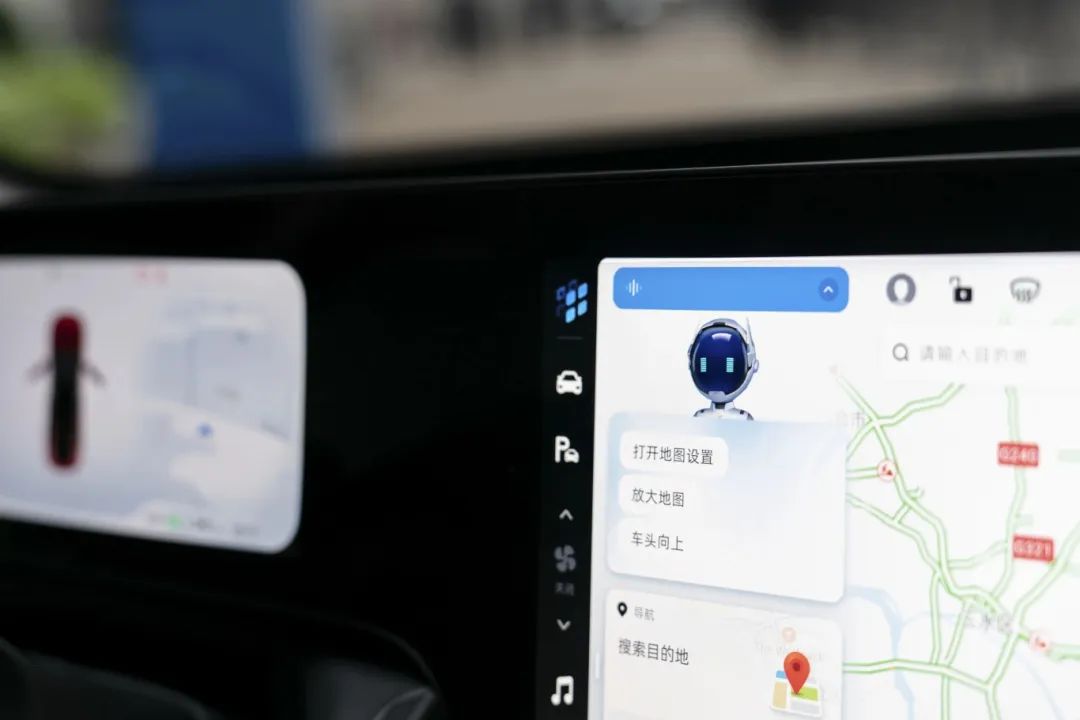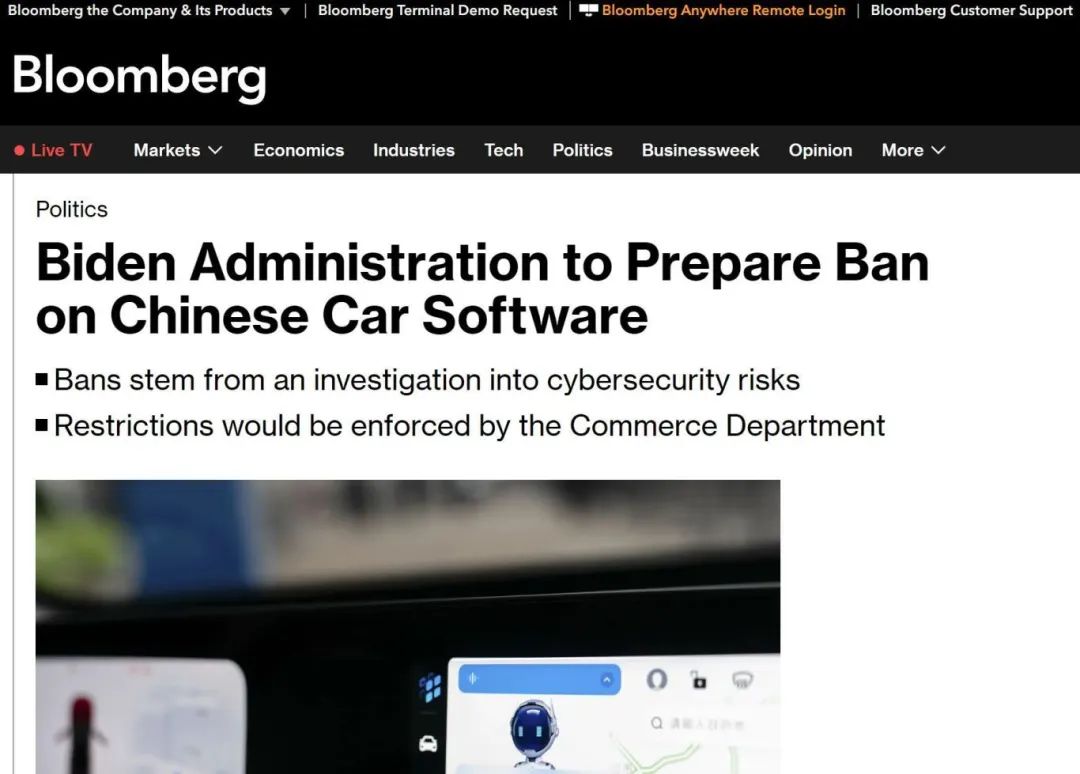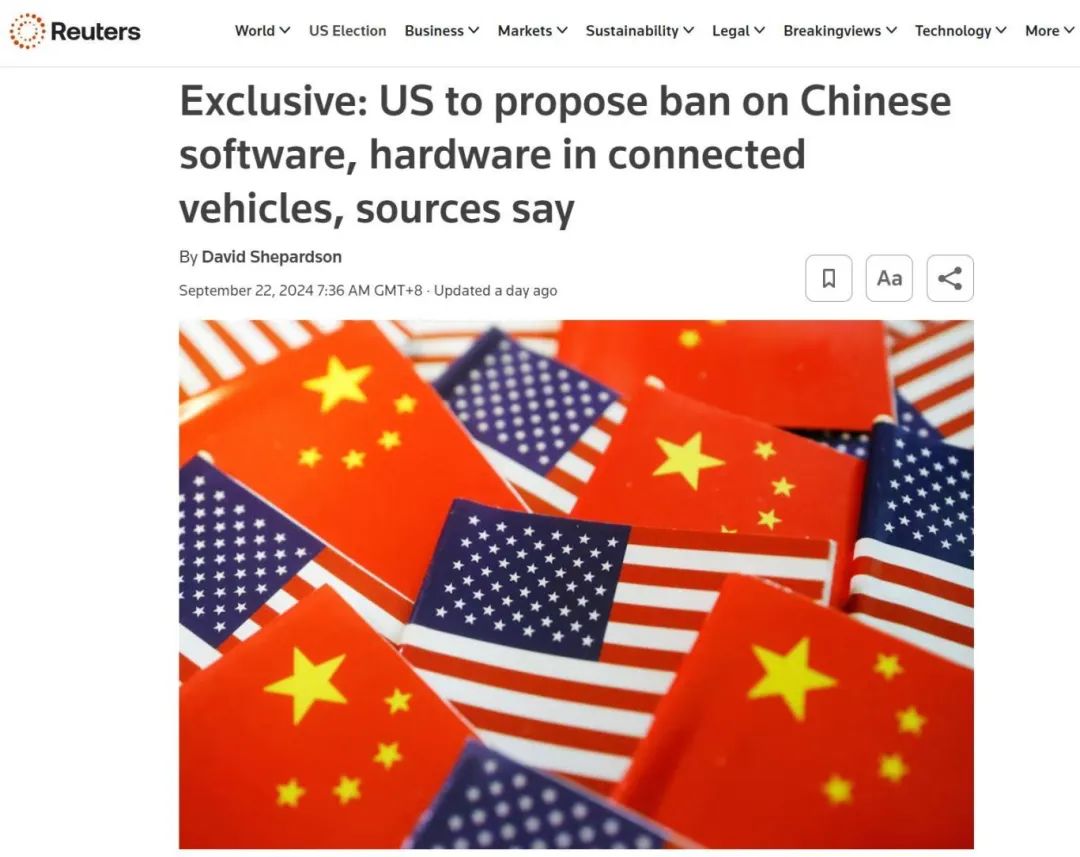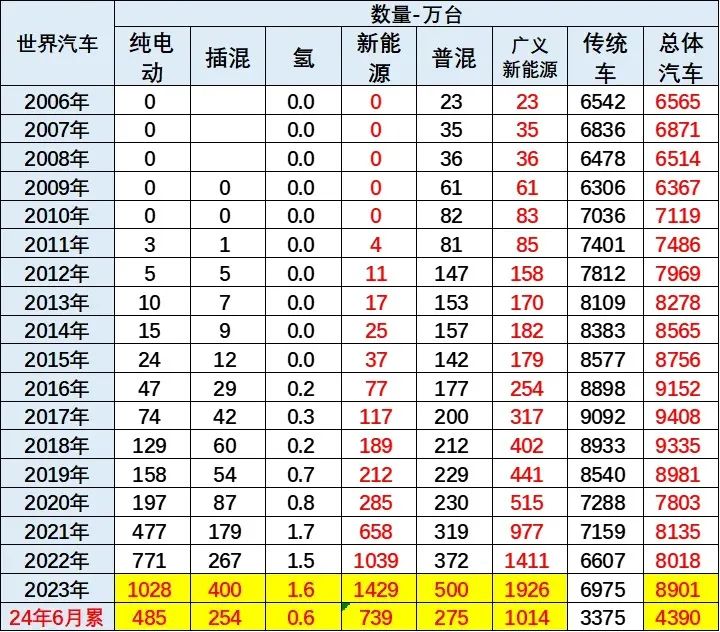The United States has targeted Chinese automobiles again
![]() 09/30 2024
09/30 2024
![]() 433
433
Introduction
Is it 'kill me' or 'make me stronger'?
The backlash against mocking the view that 'Tesla is not allowed into government compounds' has finally come full circle.
'The U.S. Department of Commerce plans to announce a proposal as early as Monday (September 23) to ban intelligent connected vehicle hardware and software manufactured in China and Russia.' The rumor will soon be confirmed.

In fact, rumors emerged in August that the United States was considering banning Chinese autonomous driving software, but in reality, it was about banning both intelligent technology software and hardware simultaneously.
According to the Biden administration, this intelligent vehicle hardware and software may collect sensitive data, posing national security concerns. Of course, U.S. Commerce Secretary Gina Raimondo has also made the astonishing statement, 'If there are 3 million Chinese cars on American roads, China could shut them all down at once.'
It is commonly believed that the transition to new energy vehicles is an inevitable trend, with the first half focused on electrification and the second half on intelligence.
In mid-September, the United States finalized tariffs exceeding 100% on Chinese electric vehicles and increased tariffs on components such as batteries, effectively severing ties with China in the dimension of electrification. Now, by planning to ban Chinese intelligent connected vehicle hardware and software, it is essentially filling in the gap in the dimension of intelligence.

Will the transition to new energy vehicles lead to a complete decoupling between China and the United States? It seems unlikely that measures aimed at killing China's new energy vehicle industry will actually make us stronger.
How will the United States proceed with its blockade of Chinese smart cars?
All major initiatives in the Sino-U.S. trade war have a long decision-making cycle.
Taking the '100% tariff on Chinese electric vehicles' as an example, the plan was announced in May 2024 and was scheduled to take effect on August 1. However, this was quickly met with significant opposition from the U.S. auto industry and requests to expand tariff exemptions. Consequently, the U.S. government announced two delays in the effective date, on July 30 and August 30.
However, demands related to the election campaign still prompted the U.S. side to press ahead to cater to political correctness. Ultimately, on September 13, local time, the Office of the U.S. Trade Representative issued the final decision on the imposition of Section 301 tariffs on China, with the measures set to take effect on September 27.
The entries related to Chinese electric vehicles primarily include:
· Electric vehicles, with tariffs increasing from 25% to 100% starting in 2024;
· Electric vehicle lithium batteries, with tariffs increasing from 7.5% to 25% starting in 2024;
· Natural graphite and permanent magnets, with tariffs increasing from 0% to 25% starting in 2026;
...
The proposed ban on intelligent connected vehicle hardware and software can be traced back to November 2023, when a bipartisan group of U.S. lawmakers expressed concern about Chinese automakers and technology companies collecting and processing sensitive data while testing autonomous vehicles in the United States.
In February 2024, the Biden administration initiated an investigation into cybersecurity risks posed by Chinese automotive software, which coincided with Raimondo's statement about the potential for Beijing to shut down 3 million Chinese cars on American roads simultaneously.
It is reported that over the past few months, the U.S. Department of Commerce has been meeting with industry experts to address security concerns arising from the new generation of so-called smart cars, with a proposal expected to be announced as early as Monday, September 23.

The scope of the proposed ban includes prohibiting the use and testing of autonomous driving systems and vehicle communication technology from China and Russia. While the ban primarily focuses on software, it will also encompass some hardware components.
The expected scope includes:
· L2 and lower-level assisted driving systems, such as those provided by Huawei HarmonyOS Intelligent Drive, XPeng, NIO, and Lixiang; L3 and higher-level autonomous driving systems, such as those offered by Pony.ai, AutoX, and Yuanrong Qixing;
· Connected vehicles equipped with L2 and lower-level assisted driving systems featuring certain Bluetooth, satellite, and wireless capabilities, as well as vehicles equipped with L3 and higher-level autonomous/driverless systems, such as robotaxis and robotrucks;
· Navigation software that tracks vehicles using maps and satellite positioning;
· Vehicle communication system hardware, which may include V2X systems that enable vehicles to communicate with road infrastructure, other equipped vehicles, and the cloud;
· Primarily affecting all passenger vehicles on U.S. roads, excluding agricultural or mining vehicles.
We all know that, taking the concept of 'chip' as an example, unlike simple CPU processors, many advanced chips today are SoCs (System on Chip), which are not just integrated circuits with specific targets but also contain complete systems and embedded software, making them an integration of hardware and software. Therefore, it is difficult to completely separate hardware and software to formulate a ban.
The U.S. Department of Commerce will implement the ban on various affected software and components in phases and will provide a 30-day public comment period before finalizing the rules in January 2025. It is possible that the software dimension of the ban will take effect for model year 2027 vehicles, while the hardware dimension will take effect in January 2029 or for model year 2030 vehicles.
The more afraid, the more conservative
When China initially banned Tesla from entering sensitive departments, some viewed it as a purely 'political tool to influence the market' and an indication of weakness, resorting to administrative intervention due to an inability to compete normally in the industry.

However, when the United States' 'new Monroe Doctrine' extends beyond Latin America to other regions and fields, such criticisms seem to have disappeared.
Admittedly, intelligent connected vehicles equipped with sentinel mode recording capabilities can indeed capture sensitive information and transmit it to other countries, making restrictions on smart cars and 'data exports' bans intimately tied to national security. Nevertheless, the trend reveals a growing conservatism and sensitivity in the United States, juxtaposed against China's growing composure and confidence, reflecting a reversal in industrial and national strength dynamics.
Why is the United States banning Chinese electric vehicles?
Because China's leadership in electric vehicles is undeniable, and if the United States wants to maintain its leading position in the automotive industry, it must stifle China's advantage.
According to statistics from the China Automobile Dealers Association, in the first half of 2024, global sales of new energy vehicles reached 7.39 million units, with a penetration rate of 16.8% (11% for pure electric vehicles and 5.8% for plug-in hybrids). Among them, sales of new energy passenger vehicles reached 7.17 million units, an increase of 21% year-on-year.
China's share of global new energy passenger vehicle sales has continued to climb. It exceeded 63% in 2022, reached 63.4% in 2023, and stood at 64.5% in the first half of 2024, with an even higher share of 67% in the second quarter (April-June).
Some might argue that this is a ruse by Europe and the United States to lure China into a new energy trap. But who's playing the wrong game, and who can't afford to play?
Have Europe and the United States truly abandoned new energy? 'Slowing down' does not equal 'giving up,' and both regions have set stringent targets for new energy penetration rates and average fuel consumption (mitigated through new energy sources).
For instance, the U.S. GHG regulations for light-duty vehicles from model years 2027 to 2032 have revised the CAFE targets, aiming for an industry-wide average CO2 emission of 73 grams per mile for new passenger vehicles by 2032, equivalent to approximately 1.9 liters per 100 kilometers, a 60% improvement over the 2026 CAFE regulations.
In other words, while some might claim that 'Americans can proudly enjoy their gas-guzzling vehicles,' the truth is that a significant number of pure electric and plug-in hybrid vehicles are needed to dilute overall fuel consumption and emissions.
China has not abandoned internal combustion engines either. After all, plug-in hybrids are the best alternative to pure gasoline vehicles. And China's new energy vehicles are currently running faster with plug-in hybrids than with pure electric vehicles.
In terms of pure electric vehicle sales, China accounted for 61% of the global market share in 2023 but retreated to 59% in the first half of 2024 due to higher growth rates in other markets. In contrast, China held a 69% share of the global plug-in hybrid market in 2023 and an even higher 74% share in the first half of 2024.
A similar story is unfolding in the realm of intelligence.

In February this year, Biden noted that most cars are like smartphones on wheels, interconnected with phones, navigation systems, critical infrastructure, and the companies that manufacture them. Placing Biden's and Raimondo's statements side by side, it becomes evident that the United States has lost confidence in the market competitiveness of its own intelligent vehicles.
According to individuals familiar with relevant U.S. departments, the ban on Chinese intelligent vehicles serves two primary purposes: firstly, to prevent Chinese companies from collecting data, especially personal data, from American drivers and transmitting it back to China; more importantly, to prevent Chinese suppliers from establishing a larger foothold in the United States, giving the American auto industry time to build its own intelligent connected vehicle supply chain.
Of course, detractors will still argue, 'The United States is stronger in chips, so how could it possibly issue a ban due to concerns about China's advantage?'
So, what is the truth?
Who gets hurt?
Every time the United States issues a ban, it's not just Chinese automakers who panic.
It is reported that international automakers, including General Motors, Toyota, Volkswagen, and Hyundai-Kia, have formed a group to lobby the U.S. government. They argue that while some intelligent hardware and software may originate from China, banning them would have severe consequences as it takes time to replace them.
These automakers claim that their intelligent systems have undergone extensive pre-production engineering, testing, and validation processes and generally cannot be easily swapped with systems or components from different suppliers.
Some intelligent technology suppliers have cross-border capital structures, such as Momenta, which has investments from both General Motors and SAIC Motor. Therefore, severing ties with Chinese intelligent connected vehicle technology would not only hurt China but also the global supply chain, which is intricately interconnected and transcends national borders, especially given China's strong industrial advantages.

In the field of electric drive systems for new energy vehicles, China not only boasts leading new energy vehicle manufacturers such as BYD, NIO, XPeng, and Li Auto but also has dominant battery suppliers like CATL, BYD, and CALB. Furthermore, China excels in basic industries like cathode and anode materials for batteries, with companies like Shanshan,BTR, and Rixiang.
In the realm of intelligence, domestic new energy vehicle startups and Huawei's HarmonyOS Intelligent Drive are on par with Tesla, the sole representative from Europe and the United States, in terms of intelligent driving and cockpit applications.
Even in the chip manufacturing sector, once considered a weakness, China has made significant progress. Huawei's successful development of the Kirin 9000, breaking through U.S. semiconductor sanctions, demonstrates that bans cannot halt semiconductor development. In the automotive chip sector, a plethora of companies are emerging with self-developed chips, posing increasing competition to the likes of NVIDIA, Qualcomm, and Mobileye.
'The tide has turned.'
After the Sino-U.S. trade war began in 2018, the public suddenly realized that the United States had been banning Chinese high-tech industries, while China had been imposing tariffs on American agricultural products.
As for excuses like 'millions of cars suddenly shutting down' or even 'exploding,' it might be best to first explain the batch of exploding mobile phones and pagers in Lebanon.
After all, one fears what one has done unto others.








